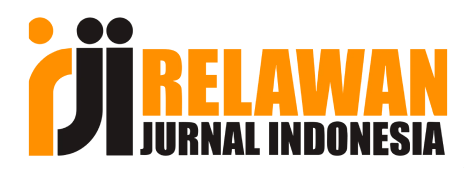Analysis of the Completeness and Effectiveness of Electronic Inpatient Medical Record at Bandung City Hospital
DOI:
https://doi.org/10.38035/ijphs.v3i3.1238Keywords:
electronic medical records, inpatient services, completeness, effectiveness, healthcareAbstract
Electronic Medical Records (EMR) are a digital documentation system essential for supporting effective and efficient healthcare services. This study aims to analyze the completeness of documentation and the effectiveness of EMR usage in the inpatient ward of RSUD Kota Bandung. A descriptive quantitative method was used with simple random sampling of 92 EMR documents and a questionnaire distributed to 30 healthcare workers. The results showed that the average completeness of EMR documentation was 88%, with the patient identity component achieving 100%, while the initial nursing assessment had the lowest completeness at 77%. The effectiveness assessment produced an average score of 3.97 on a 5-point scale, categorized as effective. The highest-rated indicators were system understanding and target accuracy, while timeliness was the lowest. It can be concluded that the EMR system at RSUD Kota Bandung functions effectively and is relatively complete; however, periodic evaluations, enhanced supervision, and continuous training are needed to optimize its use and improve healthcare service quality.
References
Agustina, R. (2019). Tingkat kelengkapan rekam medis di rumah sakit pemerintah. Jurnal Ilmu Kesehatan, 11(2), 142–148.
Arifin, M. (2017). Metodologi penelitian kesehatan. Jakarta: Mitra Cendekia Press.
Azizah, N., & Fitria, R. (2020). Evaluasi efektivitas sistem informasi rekam medis elektronik di RSUD. Jurnal Informasi dan Teknologi Kesehatan, 4(1), 31–39.
Cahyani, L., & Wardani, E. (2019). Faktor-faktor yang mempengaruhi kelengkapan dokumentasi asuhan keperawatan. Jurnal Keperawatan Indonesia, 22(1), 20–29.
Departemen Kesehatan RI. (2005). Pedoman pengelolaan rekam medis di rumah sakit. Jakarta: Departemen Kesehatan RI.
Fitriyani, T., & Yuliana, R. (2021). Pengaruh pelatihan terhadap efektivitas penggunaan sistem RME. Jurnal Administrasi Rumah Sakit, 8(2), 112–118.
Gunawan, J. (2018). Teknologi informasi dalam keperawatan. Yogyakarta: Deepublish.
Handayani, P. W., Hidayanto, A. N., & Ayuningtyas, D. (2018). Critical success factors for electronic health record system implementation in Indonesian hospitals. Journal of Medical Systems, 42(5), 93.
HIMSS. (2021). What is electronic health record (EHR)? Retrieved from https://www.himss.org
Indah, S., & Syahrul, R. (2019). Hubungan kelengkapan rekam medis dengan mutu pelayanan. Jurnal Kesehatan Komunitas, 5(1), 10–16.
Kementerian Kesehatan RI. (2008). Permenkes No. 269 Tahun 2008 tentang Rekam Medis. Jakarta: Kementerian Kesehatan RI.
Kementerian Kesehatan RI. (2022). Permenkes No. 24 Tahun 2022 tentang Rekam Medis Elektronik. Jakarta: Kementerian Kesehatan RI.
Kusumawati, R. (2020). Strategi peningkatan mutu dokumentasi RME. Jurnal Kebijakan Kesehatan, 13(2), 55–62.
Mulyadi, D. (2021). Evaluasi efektivitas RME di instalasi rawat inap. Jurnal Rekam Medis dan Informatika Kesehatan, 9(1), 33–41.
Notoatmodjo, S. (2012). Metodologi penelitian kesehatan. Jakarta: Rineka Cipta.
Nugroho, R., & Prasetyo, A. (2022). Efektivitas sistem rekam medis elektronik dalam meningkatkan mutu pelayanan pasien. Jurnal Administrasi Rumah Sakit Indonesia, 8(1), 45–52.
Putri, F., & Santoso, R. (2020). Analisis efektivitas implementasi rekam medis elektronik di RSU Yogyakarta. Jurnal Informasi Kesehatan Indonesia, 5(2), 63–70.
Rahmawati, D., & Lestari, A. (2021). Pengaruh infrastruktur TI terhadap penggunaan RME. Jurnal Sistem Informasi Kesehatan, 6(2), 78–85.
Robbins, S. P. (2006). Organizational behavior (12th ed.). New Jersey: Pearson Education Inc.
Setiawan, I., Handayani, P. W., & Azzahro, F. (2020). Challenges of electronic medical records adoption in Indonesia hospitals: A literature review. Procedia Computer Science, 161, 1052–1059.
Siregar, L. M., Hanafiah, M., & Simbolon, D. (2021). Evaluasi kelengkapan RME berdasarkan standar SNARS. Jurnal Rekam Medis dan Informasi Kesehatan, 11(1), 15–21.
Sutrisno, H. (2007). Manajemen sumber daya manusia. Yogyakarta: Amara Books.
Suyatna, A. (2018). Hubungan kelengkapan RME dengan lama perawatan pasien. Jurnal Ilmu Kedokteran dan Kesehatan, 10(3), 120–127.
World Health Organization. (2016). Electronic health records: Manual for developing countries. Geneva: WHO.
Zulkifli. (2015). Peran analis kesehatan dalam menjamin kualitas informasi medis. Jurnal Profesi Kesehatan, 3(1), 55–62.
Downloads
Published
Issue
Section
License
Copyright (c) 2025 Afra Nawal Efendy, Erix Gunawan

This work is licensed under a Creative Commons Attribution 4.0 International License.
Authors who publish their manuscripts in this journal agree to the following conditions:
- The copyright on each article belongs to the author(s).
- The author acknowledges that the International Journal of Psycology and Healt Science (IJPHS) has the right to be the first to publish with a Creative Commons Attribution 4.0 International license (Attribution 4.0 International (CC BY 4.0).
- Authors can submit articles separately, arrange for the non-exclusive distribution of manuscripts that have been published in this journal into other versions (e.g., sent to the author's institutional repository, publication into books, etc.), by acknowledging that the manuscript has been published for the first time in the IJPHS.






















